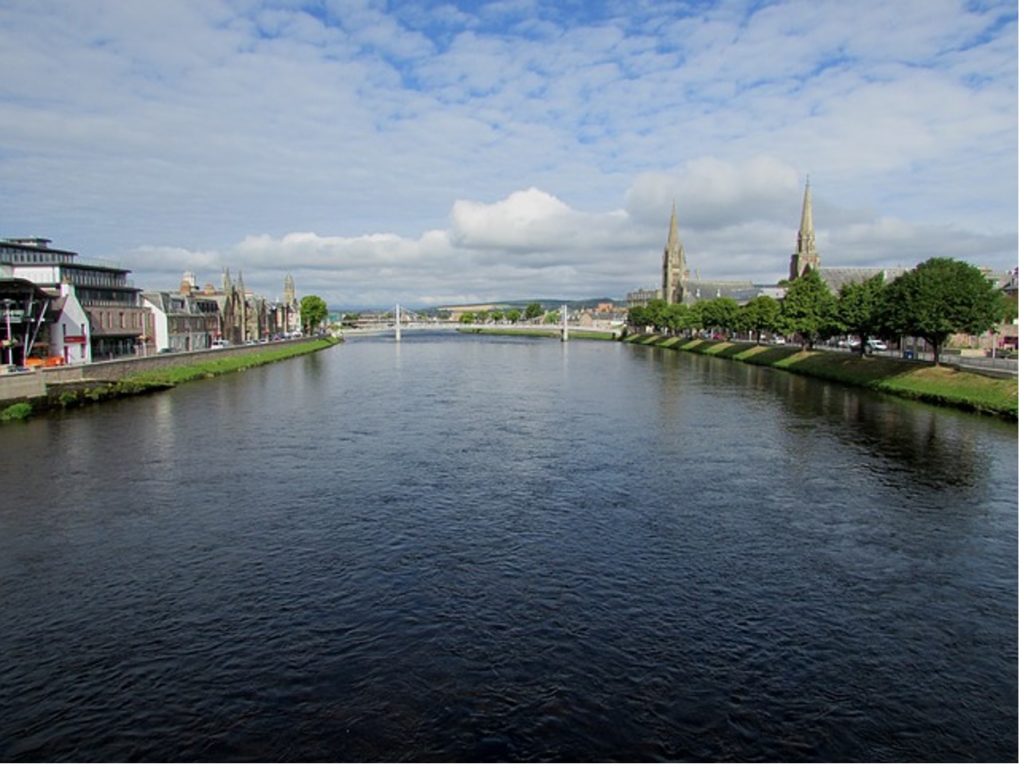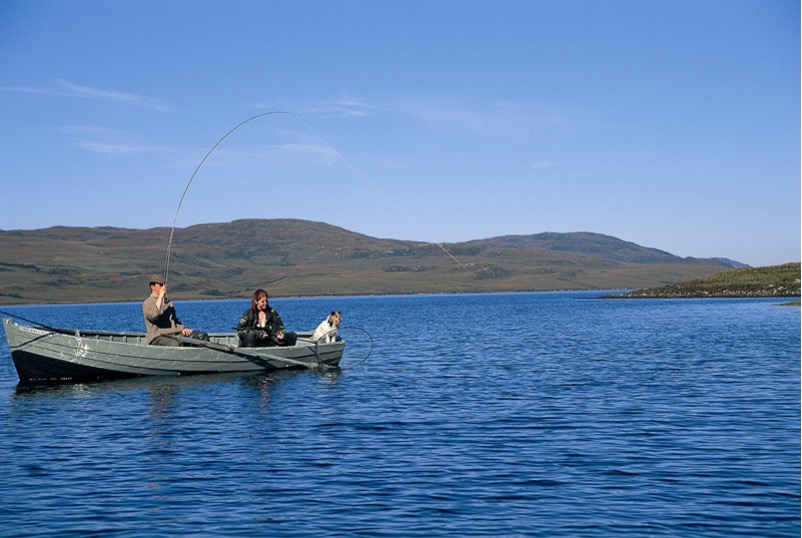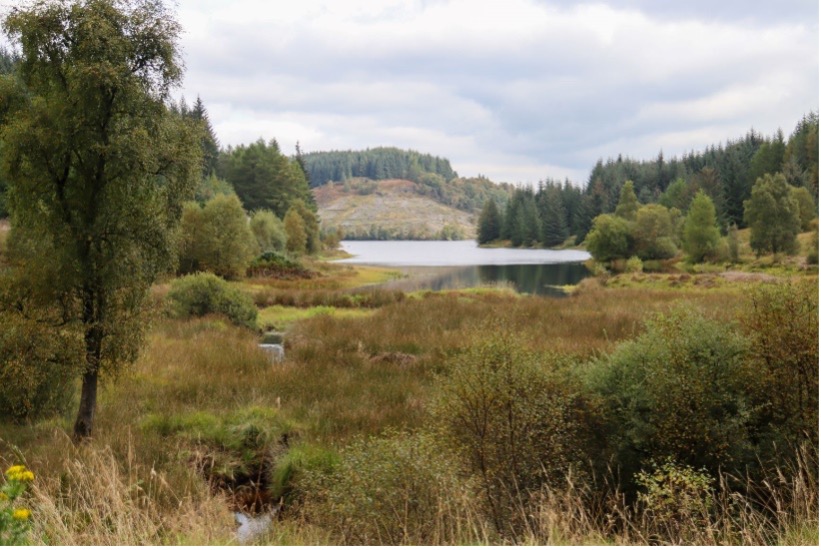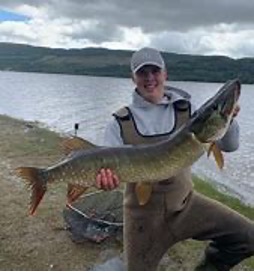Surrounded by the bountiful North Atlantic Ocean and boasting hundreds of rivers and lochs, Scotland has long had a global reputation as an angler’s paradise.
The UK’s (Sort of UK – at least for now) most mountainous country, Scotland is the ideal location to enjoy outdoor sports like fishing. For centuries, fly-fishing has been a popular pastime throughout the nation, with anglers chancing their arm at landing sizable trout and salmon.
WARNING:
You can’t go to Scotland to fish without being prepared which means proper clothes for foul weather, a healthy appetite for unbelievable seafood, a love of whiskey (and gin) and wonderful people. You will find it hard being a grouch in Scotland even in the worst weather when you walk into a pub.
You will find the people to be extremely gracious in directing you to places where the fishing is good.
If you happen to have a fly rod in your hand when you walk into a country pub, you will probably get a wee one on the house – especially if the weather is bad.
Food Alert: It isn’t all fish and chips. Edinburgh and the local villages have ridiculously good food. The seafood is crazy good.
Alcohol Alert: Most people think of Scotland as Whiskey Paradise and it is. I highly recommend a few visits along the way to a couple of the distillers. Plan ahead. HOWEVER, I also recommend trying some of the local gins – they have been crafting some really odd but delightful batch gins around the country. Lastly, the local beers –are fantastic. It’s worth noting that I think most of the good gin and local beers don’t leave Scotland so drink em while your there.
Driving Alert: Forget the driving on the wrong side of the road – what is challenging is how narrow the local roads are. If you are heading out into the countryside – be prepared.
Edinburgh Alert: The city is stunning, charming, elegant and completely enjoyable. I could have stayed a week there. Culturally very active in art, music, nightlife and dining. Much, much better than anyone thinks. A good place to rent a VRBO for a week just to settle in and feel the vibe.
I have pretty much started this note about why to go to Scotland without anything about the fishing. I am not employed by the Scottish Tourist Agency but in all my travels, it’s a place I know I can go back to at least 2-3 times more and I won’t have experienced all I want (I did have Whiskey on my Oatmeal in the morning which is a unique and wonderful start to the day).
On to fishing:
It’s a wild country with a lot of places to go. Research it ahead of time in terms of species, location, scenery, and challenge you want to face. You must be very knowledgeable about rules relating to licenses and land/water rights. You can research this ahead of time either with an outfitter or reach out to a Scottish guide online. You will find them very helpful.
Its’ hard for me to say where to go because there are so many unique areas – all holding fish and all with different vibes. Think of the species you want to target and how much the catching versus the experience matters to you.
I still have a bucket list of fish to catch so my trips in the future will be leaning towards Pollock, Greylink and the Salmon.
Species to focus on: Pike, Atlantic Salmon, Trout (Rainbow, Sea and Brown), Greylink, Perch and Pollock if you have the patience.
There are too many places to list where to fish so I suggest you plan your places way ahead of time. And completely unlike other fishing trips, don’t just fish. Fish one day, enjoy the next. Sounds odd but this is one of those places you must because it’s so special.
Quick Ideas:
1. The River Ness

Just 10 minutes from Inverness, the River Ness covers some of Scotland’s most glorious countryside. Flowing from the northern end of Loch Ness, the river winds northeast to Inverness, giving the city its name, which translates from Scottish Gaelic to English as “Mouth of the Ness.”
The River Ness is one of the northern Scotland’s most productive salmon rivers, with up to 700 salmon in a season. The River Ness is also an ideal location to fish for brown trout.
2. Loch Maree
Deep in the Highlands of Achnasheen in northwest Scotland, Loch Maree is the fourth largest freshwater loch in Scotland. At 4 kilometers wide and more than 20 meters long, it incorporates more than 66 small islands.
If you go there, two places definitely worth a visit: Beinn Eighe National Nature Reserve and the Isle Maol Rubha, the remnants of an eighth century chapel, holy well, and graveyard. The waters of Loch Maree have been touted as a cure for lunacy for centuries, attracting patients who plunged into the loch’s icy waters in the hope of good health.
Loch Maree Hotel in Talladale controls most fishing of the loch today. Both sea trout and brown trout are plentiful, generally responding well to flies. However, larger specimens tend to prefer a combination of natural bait and the dappling technique. Salmon are found in larger numbers near the waters that feed into Loch Maree and prefer the wet fly.
3. Loch Hope
Loch Hope is a great sea trout and salmon fishery. You can rent small boats yourself on a weekly or daily basis from multiple ports. I recommend a guide just to get you on the fish faster. But floating in a boat, finding fish, and drinking scotch isn’t a waste of a day.
Fed by the Strathmore River and drained by the River Hope, fishing on Loch Hope is by fly only, including dappling, with fishing starting in June and continuing through July and August. An average season may produce up to 500 sea trout, each weighing just under a kilo, on average. Salmon landed in Loch Hope are considerably larger, weighing around 6 pounds, on average.

4. Loch Drunkie

First of all, how can you not like the name? Situated in Trossachs National Park near the town of Aberfoyle, the woodland surrounding Loch Drunkie is home to an abundance of wildlife including red squirrels, deer, osprey and other rare bird species.
At 1.6 kilometers long and 0.32 kilometers wide, Loch Drunkie plunges down to depths of 30 meters. Often overlooked in favor of the Trossachs’ larger lochs, with its calm black waters and overhanging trees, Loch Drunkie provides picturesque views year-round. Its main inhabitant is brown trout. The loch’s seclusion and relative small size make for a relaxing fishing getaway between March and October.

5. River Tweed
With a reputation as one of the greatest salmon fishing rivers in the world, the River Tweed produces more rod-caught salmon than any other location in Europe. Crossing more than 150 kilometers of spectacularly scenic borders countryside before entering England and emptying into the ocean at Berwick-upon-Tweed, the River Tweed is home to Junction Pool, an exclusive Scottish fishing location that costs up to £1,400 per angler per day to fish at the height of the fishing season.
Scotland’s second-longest river, the Tweed has been popular with sport fishers since the 17th century and is renowned for its salmon run. In Victorian times, visiting anglers enjoyed some of the best fishing in angling history, their innovative approach to tackle design still reflected in tackle today.
